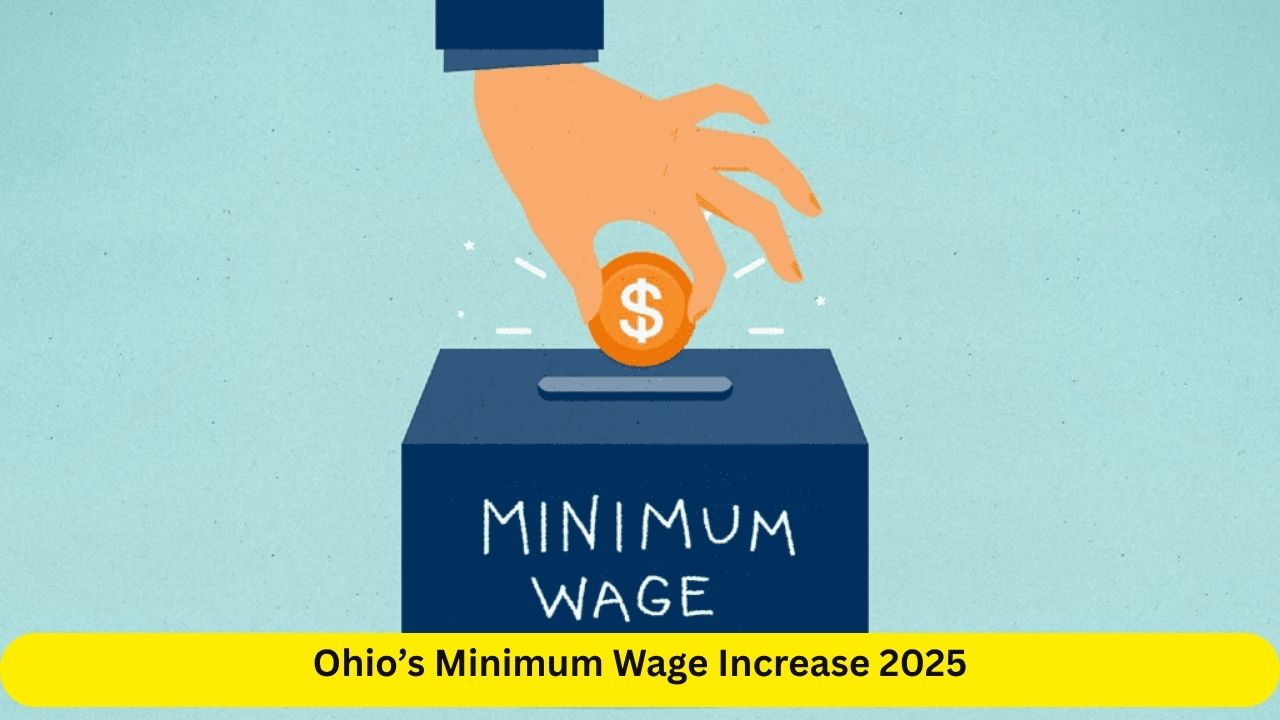In early 2025, Ohio took another step in its long-term strategy to ensure fair wages for its workforce. On January 1, the state minimum wage for non-tipped employees rose to $10.70 per hour, while tipped employees now earn $5.35 per hour, plus any tips. This incremental increase continues Ohio’s voter-approved, inflation-indexed wage formula enacted in 2006. But what does this mean for workers, small businesses, and the broader economy? This comprehensive article explores the implications of the wage hike, backed by regional stats, historical context, and future outlook.
Historical Context: Why the Increase Happened
Ohio’s journey toward indexing minimum wages dates back to:
-
2006 ballot measure: Voters established the state’s minimum wage above the federal level, set at $6.85 and tied it to annual inflation.
-
Steady increases: Since then, the wage has climbed from $6.85 in 2006 to:
-
$8.55 in 2019
-
$10.10 in 2023
-
$10.45 in 2024
-
Currently $10.70 in 2025
-
-
Cost-of-living adjustments: The wage automatically adjusts each January 1 based on the Consumer Price Index (CPI) — unless overridden by legislation.
What the 2025 Increase Means for Workers
1. Real-dollar boost, flat real earned income
Though nominal wages have risen significantly, real purchasing power has barely budged. A full-time worker earning the minimum wage ($10.70 × 40 hours × 52 weeks) now makes about $22,256 annually. However, a family of three needs approximately $25,000–$28,000 to cover basic living expenses, leaving a gap of $3,000–$6,000—even after the wage increase.
2. Who benefits most
-
Adults, not teens, receive most of the increases.
-
Around 1 million Ohioans earn below $15/hour and are directly affected; many more benefit indirectly as employers adjust pay scales upward.
-
Women and people of color, who are disproportionately represented in lower-wage roles, see a more significant impact.
Impact on Businesses and Employers
1. Labor cost increases
Companies with gross receipts above ~$394,000 face higher payroll costs. On average, wages rose 2.4% from $10.45 to $10.70 for non-tipped workers.
2. Response strategies
To cope, employers may:
-
Shift expenses: raising prices, trimming hours, automating workflows
-
Accept higher margins: particularly in industries like manufacturing or logistics
-
Offer productivity bonuses: tying pay raises to performance metrics
3. Small-business exemption
Employers with annual gross revenues under $394,000 may continue paying the federal minimum wage of $7.25. However, this carve-out creates competitive disparity and could limit hiring among small outfits.
Regional Breakdown: City-by-City Effects
-
Cleveland & Akron areas: With an average wage of $28.79/hour and many adults still under the state minimum, the hike offers some relief but not enough to meet living costs in urban counties.
-
Dayton and Cincinnati metro: Moderate cost-of-living still outpaces the increase; however, restaurant and retail staff may see slightly improved retention.
-
Rural Appalachia (southeastern Ohio): Lower overhead and rural wages mirror the wave but amplify the living gap, emphasizing the need for additional investments or subsidies.
Future Prospects: Path to $15?
A ballot initiative on the November 2025 ballot aims to:
-
Raise the minimum to $12.75/hour in 2025
-
Reach $15/hour by 2026
-
Phase out the tipped sub-minimum wage through 2029
If enacted, this would boost annual incomes for full-time workers by $2,000–$3,000, injecting over $2 billion into the state’s economy and helping reduce racial and gender wage gaps.
Economic Ripple Effects
-
Increased consumer spending: Lower-wage workers spend most of their earnings locally, benefiting small businesses.
-
Inflation pressure: Slight price increases may follow in consumer goods and services.
-
Hiring trends: Automation or part-time scheduling may offset some cost pressures, but recent numbers show only modest job losses in Ohio’s May 2025 report, suggesting the economy remains resilient and adaptable.
Challenges and Concerns
-
Hiring freeze risk: Some employers may reduce new positions or hours.
-
Price inflation: Industries like food service may raise prices by 3–5%.
-
Wage compression: Tensions may arise when entry wages draw close to mid-tier roles, requiring internal adjustments.
-
Policy complexity: Administering the small-business exemption and tracking tipped earnings creates compliance burdens.
Advice for Ohio Employers
-
Budget for increase: Factor the 25-cent rise in payroll projections.
-
Monitor margins: Analyze if price increases or operational efficiencies are necessary.
-
Engage staff: Explain the raise openly to boost morale and loyalty.
-
Plan ahead: Follow the $15 initiative closely — if passed, it’ll reshape compensation planning across industries.
Advice for Ohio Workers
-
Understand rights: Workers must be paid the higher of state or federal wage.
-
Track tips: For tipped employees, employers must ensure combined pay meets the minimum.
-
Use budgeting tools: Adjust household finances to align with incremental income changes.
-
Stay active: Public support for the $15 initiative is strong — voice opinions at local forums or vote in November 2025.
Conclusion
Ohio’s January 1, 2025 minimum wage bump to $10.70 (non-tipped) and $5.35 (tipped) is more than just numbers — it’s a meaningful but limited step toward supporting low-income workers. While the rise narrows income gaps and boosts consumer spending, the cost of living still outpaces wages in many regions. For businesses, the change brings modest pressures but also opportunities to invest in staff retention and efficiency. The bigger story is what lies ahead: a potential leap to $15/hour that would substantially reshape the state’s wage landscape. Until then, both employers and employees must stay informed, proactive, and engaged in the evolving dialogue around fair wages in Ohio.
















Leave a Reply